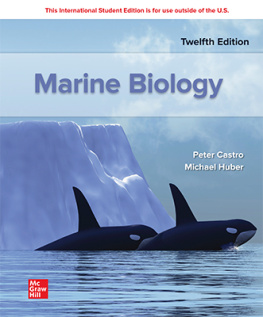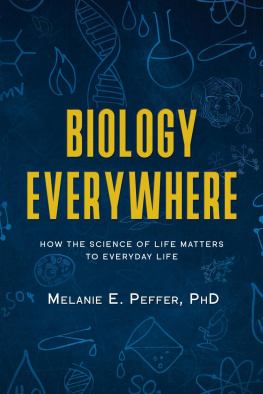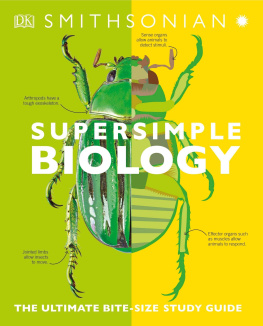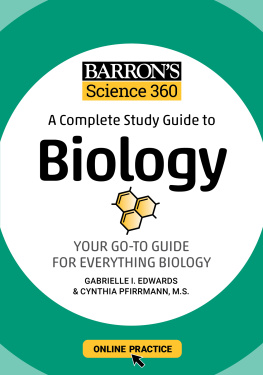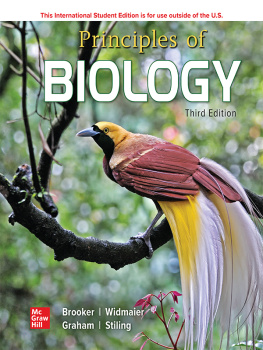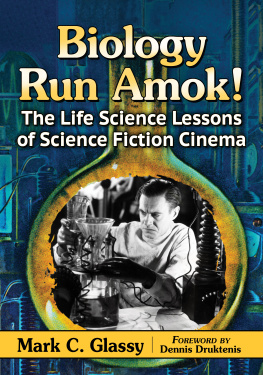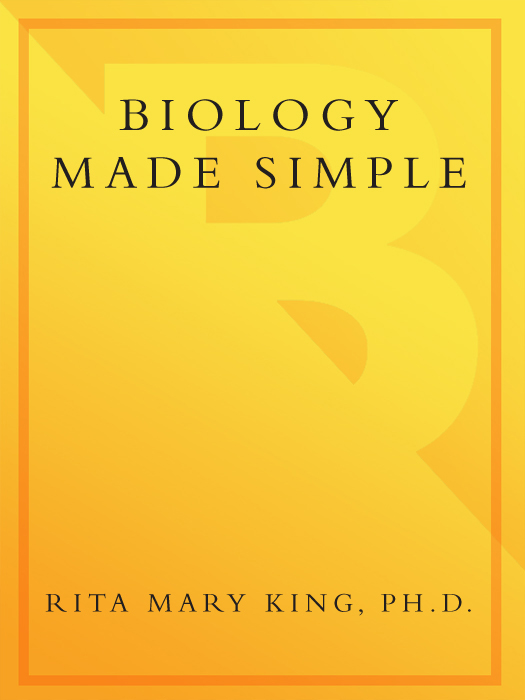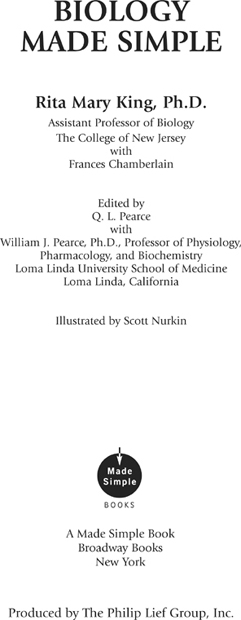One of the most remarkable things about our home planet is that it is teeming with life. No matter where you travel from equator to pole, from mountain to ocean, you will encounter living things. This book introduces you to biology, the study of living organisms and their characteristics.
How is life defined? This is a question open to some debate, but biologists have determined certain traits that organisms have in common. Life is associated with various properties and processes: order, growth and development, reproduction, energy utilization, response to the environment, homeostasis, and evolutionary adaptation. From the smallest bacterium to the majestic blue whale, living things exhibit these properties and processes in some form.
TRAITS OF LIVING THINGS
Order: The basic cell is composed of smaller units. Living things are made up of cells. An organism may be made of a single cell, or a complex combination of cells.
Growth and Development: Living organisms increase in size and/or number of cells.
Reproduction: Through sexual or asexual means, living things reproduce new organisms of their species and so pass on hereditary material.
Energy Utilization: Through a process called metabolism, living things utilize an energy source (food) to fuel functions.
Response to Environment: Living things respond to stimuli in the environment. An example of a response is movement toward food or away from a threat.
Homeostasis: Living things seek an internal environment that is favorable to cell function.
Evolutionary Adaptation: Living things may adapt to environmental change resulting in an increased ability to reproduce.
As amazing as it seems, you share a great deal with the roses in your garden, your neighbors goldfish, and the bug that gave you the sniffles a few weeks ago. Even though organisms may seem very different on the outside, there are many unifying themes in biology. We will explore them further in later chapters, but let us begin our journey with an introduction to these themes.
HIERARCHICAL ORDER IN LIFE
The Greek philosopher, Democritus of Abdera (460370 BC), proposed that all forms of matter are made up of basic, indivisible particles, which he called atoms. He was off to a good start, but it would take more than two thousand years for scientists to come up with a working model.
.
Biologically speaking, certain atoms combine to form complex biological molecules, such as proteins. Various biological molecules form cellular organelles, such as a nucleus, and these organelles are ordered into cells. The cell is the smallest unit of life, but it is just the beginning. In multicellular organisms, similar cells that perform a specific function are organized into tissues. Different tissues that work together to perform a particular function become organs, the stomach for example. An organ system is a group of organs that works together to perform a particular function, such as digestion. The result is an individual complex organism, such as a human.
Lets not stop there. Levels of organization in biology go far beyond the individual organism. A localized group of organisms belonging to the same species is called a population, and populations are grouped into a community. An ecosystem is an energy-processing system of community interactions that include non-living (abiotic) environmental factors such as, water, air, and soil. Biomes are large-scale communities classified by a main vegetation type and distinctive combinations of plants and animals. Finally, the biomes make up the biospherethat part of the planet on which all life exists.
LEVELS OF ORGANIZATION
Biosphere: Regions of Earths crust, water, and atmosphere inhabited by living things
Ecosystem: A community and its environment
Community: Populations of different species living in the same area
Population: Group of organisms of the same species living in the same area
Multicelled Organism: An individual organism made up of cells organized as tissues, organs, and organ systems
Organ System: Two or more organs interacting to perform a particular function
Organ: A unit composed of tissues, combined to perform a specialized task or tasks
Tissue: Cells and substances combined to perform a specialized function
Cell: Smallest unit with the ability to live and reproduce
Organelle: Intracellular compartment surrounded by a protective membrane
Molecule: A unit made up of two or more atoms of the same or different elements
Atom: Smallest unit of an element that retains the properties of the element
Subatomic Particle: Fundamental unit of matter such as proton, neutron, and electron
CELLULAR BASIS OF LIVING THINGS
In the Hall of Fame for Biological Theories, the Cell Theory is among the super stars. Its seeds were planted during the seventeenth century following the invention of the microscope. Robert Hooke (16351703) was well known in his day as the Curator of Experiments for the Royal Society of London. He had developed an excellent compound microscope and he used it to observe small organisms. Hooke noted box-like structures in a thin slice of cork. He called them cells since they reminded him of the cells in a monastery. Within a decade, the Royal Society asked Hooke to review the work of Antonie van Leeuwenhoek. The latter had observed living cells when he viewed microbes in pond water.
In 1665, Robert Hooke published a book of his observations called, Micrographia. He illustrated it with detailed drawings of microscopic views of insects, plants, feathers, and, yes, those famous cork cells. Samuel Pepys praised it as, the most ingenious book that I ever read in my life.
In 1838, Matthias Schleiden proposed that, like cork, all plants were composed of cells. A year later, Theodor Schwann took it even further. He believed the cell was the basic functioning unit of all living things. The cell theory was officially born in 1868, when pathologist Rudolf Virchow combined the earlier ideas and went on to show that cells are the result of division of preexisting cells.
Life will always remain something apart, even if we should find out that it is mechanically aroused and propagated down to the minutest detail.
Rudolf Virchow, 1855
The cell is the lowest level of biological structure capable of performing all of the activities of life. The invention of the electron microscope in the 1950s has allowed us to determine the ultrastructure of cells. All have a plasma membrane and, at some stage in their development, contain deoxyribonucleic acid, better known as DNA. Structurally, cells can be divided into two groups, prokaryotes and eukaryotes.
Prokaryotes were the first cells on Earth. Archaebacteria and bacteria are prokaryotic cells. They are generally between 0.1 and 10 m in size. Their DNA is not separated from the rest of the cell by a membrane-bound nucleus and they lack membrane-bound organelles. Most prokaryotic cells have tough external cell walls. There is no cytoskeleton (a lattice-like network of proteins that holds a cell together and gives it its shape) or cytoplasmic streaming (the flow of cytoplasm from one cell region to another). Metabolism can take place in the presence of oxygen (aerobic) or not (anaerobic), depending upon the cell type and species. Cell division is accomplished by binary fission.


